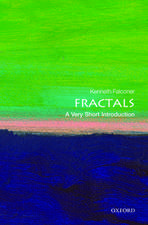Classical Complex Analysis, Volume 2
Autor I-Hsiung Linen Limba Engleză Paperback – 8 sep 2010
The book is rich in contents, figures, examples and exercises. It is self-contained and is designed for a variety of usages and motivations concerning advanced studies. It can be used both as a textbook for undergraduate and graduate students, and as a reference book in general.
| Toate formatele și edițiile | Preț | Express |
|---|---|---|
| Paperback (1) | 616.47 lei 6-8 săpt. | |
| WORLD SCIENTIFIC – 8 sep 2010 | 616.47 lei 6-8 săpt. | |
| Hardback (1) | 909.52 lei 6-8 săpt. | |
| WORLD SCIENTIFIC – 8 sep 2010 | 909.52 lei 6-8 săpt. |
Preț: 616.47 lei
Preț vechi: 725.26 lei
-15% Nou
Puncte Express: 925
Preț estimativ în valută:
117.97€ • 124.04$ • 97.47£
117.97€ • 124.04$ • 97.47£
Carte tipărită la comandă
Livrare economică 16-30 aprilie
Preluare comenzi: 021 569.72.76
Specificații
ISBN-13: 9789814271295
ISBN-10: 9814271292
Pagini: 694
Dimensiuni: 169 x 228 x 24 mm
Greutate: 0.85 kg
Editura: WORLD SCIENTIFIC
ISBN-10: 9814271292
Pagini: 694
Dimensiuni: 169 x 228 x 24 mm
Greutate: 0.85 kg
Editura: WORLD SCIENTIFIC
Recenzii
Some chapters of the book are suitable for undergraduate and graduate students. It is a good book since it presents many examples and exercises of different levels. Occasionally, different proofs are given for the same theorem which is inspiring and nice for illuminating / presentation of various methods. This is very useful, especially for beginners. In addition, the style of writing is good and clear. Great effort is made to make the book suitable for convenient reading, the hundreds of figures presented in the book are very helpful as well. -- Zentralblatt MATH "Zentralblatt MATH"














